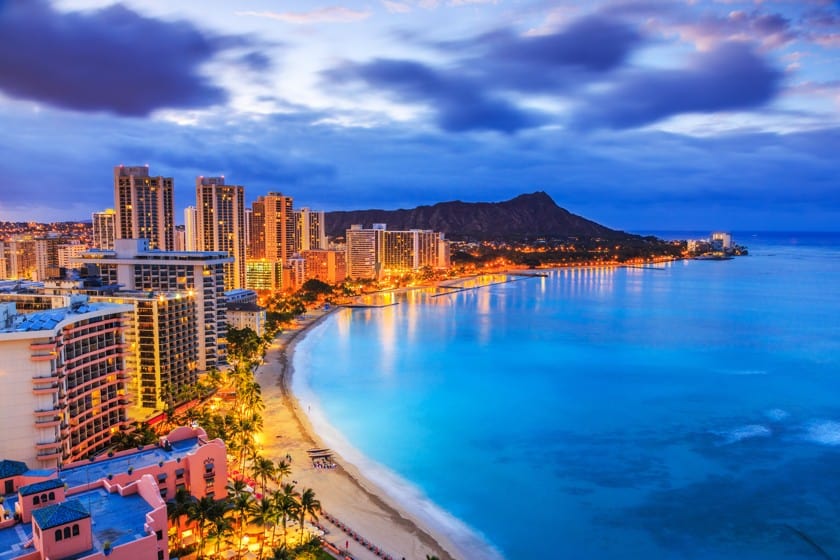 Hawaii has struggled to find a balance between the desire to open the doors to tourism and the need to protect its citizens. With Governor David Ige’s announcement that the state is unlikely to open transpacific travel on its target date of October 1, it looks like security will continue to win. Meanwhile, Kauai has been given permission to start planning for bubbles. resort. The resort bubble concept was launched in July and the Ige government signed an order in August to allow counties to formulate plans for them.
Hawaii has struggled to find a balance between the desire to open the doors to tourism and the need to protect its citizens. With Governor David Ige’s announcement that the state is unlikely to open transpacific travel on its target date of October 1, it looks like security will continue to win. Meanwhile, Kauai has been given permission to start planning for bubbles. resort. The resort bubble concept was launched in July and the Ige government signed an order in August to allow counties to formulate plans for them.
Visit Hawaii without quarantine starting October 15th
The new policies allow a visitor to avoid quarantine if they can produce a negative test result within 72 hours of flight departure. Hawaii Governor David Ige announced that starting October 15, visitors to Hawaii will be able to provide evidence of a negative COVID-19 test result to avoid an otherwise mandatory 14-day quarantine that has been in effect since 26. March. Without the negative test result, passengers arriving from out of state will be subject to a 14-day quarantine or will need to be quarantined until they can provide proof of a negative test result.
Beginning September 1, travelers to Hawaii must also complete a mandatory online health application. The digital form is required for both out-of-state arrivals and travel within the island. Travelers must complete the form at least 24 hours prior to departure and, once the form is completed, they will receive a QR code by email. They can then scan the QR code from their mobile device or a printed version at the airport upon arrival. It was not disclosed when the mandatory 14-day quarantine for inter-island passengers would be lifted.
Kauai got permission for “Resort Bubbles”
If a guest tamper with their monitoring unit or leave the resort bubble, hotel security will notify the Kauai Police Department. The punishment for these offenders, if convicted, would be a fine of up to $ 5,000 or serving a year in prison, or both. It was not disclosed when the mandatory 14-day quarantine for inter-island passengers would be lifted. The response to the resort bubble idea has varied. Unsurprisingly, those in the travel and hospitality industry are thrilled with the possibility. Others are, understandably, concerned about the safety of the resort’s workers if those potentially COVID positive stay at the resort for 2 weeks and can travel within its limits.
What are the “Resort Bubbles”
The resort-bubble concept would be an intermediate stage that could allow some tourism to resume in a controlled fashion, said Marc Langevin, general manager of The Ritz-Carlton. The Hawaiian island of Kaua’i is launching “resort bubbles” where quarantined vacationers will still be able to leave their rooms to use the resort’s pool and restaurants. Under current rules, all visitors to Hawaii must quarantine for 14 days. In fact, the Hawaiian Tourism Authority warns on its website Go Hawaii; “As this would mean visitors would have to stay in their rooms for most or all of their vacation, travelers are strongly advised to postpone any trip to Hawaii.” Essentially, this means that visitors who want to come to the island will still have to remain in quarantine for 14 days, however they will be able to roam their resort.
So instead of being stuck in a hotel room for 14 days, they’ll be able to use the facilities including on-site pools and restaurants. Rules such as face coverage and social distancing will continue to be maintained. Quarantined vacationers will not be able to leave the resort. To ensure compliance, guests will be required to wear an electronic tracking bracelet, which is monitored by the resort they are staying at.
Beaches, hotels and restaurants have reopened with sanitary requirements
During the current phase, all businesses have been cleared for reopening except larger venues and clubs, including hotels, restaurants, bars, retail stores, shopping malls and indoor fitness facilities, most with some type of physical distance and additional security measures in place.
The beaches of Oahu, Maui, Kauai and the Big Island are all open. Haleakala National Park is open. Everyone in Hawaii is encouraged to wear a face mask, per the recommendation of the US CDC, and those who enter any type of business must wear one.
 Hawaii has struggled to find a balance between the desire to open the doors to tourism and the need to protect its citizens. With Governor David Ige’s announcement that the state is unlikely to open transpacific travel on its target date of October 1, it looks like security will continue to win. Meanwhile, Kauai has been given permission to start planning for bubbles. resort. The resort bubble concept was launched in July and the Ige government signed an order in August to allow counties to formulate plans for them.
Hawaii has struggled to find a balance between the desire to open the doors to tourism and the need to protect its citizens. With Governor David Ige’s announcement that the state is unlikely to open transpacific travel on its target date of October 1, it looks like security will continue to win. Meanwhile, Kauai has been given permission to start planning for bubbles. resort. The resort bubble concept was launched in July and the Ige government signed an order in August to allow counties to formulate plans for them.





